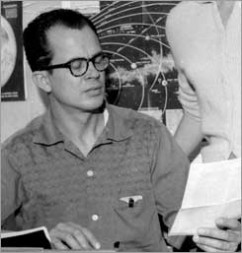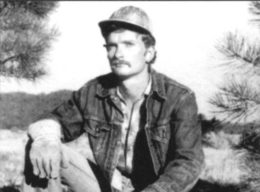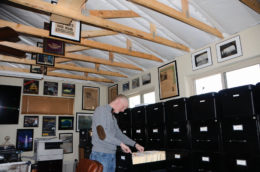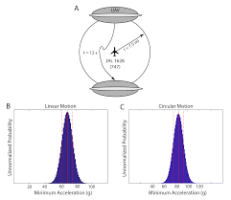By Charles Lear
For most of the modern UFO era, those interested in the subject have depended on private groups for information. The most prominent and enduring of these is the Mutual UFO Network. What many may not know is that MUFON came about as an offshoot of an extraordinary group called the Aerial Phenomena Research Organization that was a mom and pop operation for much of its existence.
 APRO was formed in the fall of 1951 through the efforts of Coral Lorenzen with the help and encouragement of her husband, Jim. Coral’s interest in UFOs preceded the 1947 Kenneth Arnold sighting by more than a decade following her own sighting of an unexplained object. Coral claimed that in 1934, as a young girl with the maiden name, Lightner, she and her two playmates, Barbara Stringer and Dorothy Wethern, saw what looked like a parachute moving across the sky. Coral noticed that it didn’t have any strings and this caused her to question whether what she was seeing actually was a parachute. She told her father what she had seen and he was impressed enough to make inquiries and found that there were no pilots in the area at that time. Three years later, at the age of 12, Coral was being checked for astigmatism and told her doctor what she had seen. He recommended that she read the books of Charles Fort, a writer who was a pioneer chronicler of the strange and unusual, and Coral developed an interest that would stick with her for the rest of her life.
APRO was formed in the fall of 1951 through the efforts of Coral Lorenzen with the help and encouragement of her husband, Jim. Coral’s interest in UFOs preceded the 1947 Kenneth Arnold sighting by more than a decade following her own sighting of an unexplained object. Coral claimed that in 1934, as a young girl with the maiden name, Lightner, she and her two playmates, Barbara Stringer and Dorothy Wethern, saw what looked like a parachute moving across the sky. Coral noticed that it didn’t have any strings and this caused her to question whether what she was seeing actually was a parachute. She told her father what she had seen and he was impressed enough to make inquiries and found that there were no pilots in the area at that time. Three years later, at the age of 12, Coral was being checked for astigmatism and told her doctor what she had seen. He recommended that she read the books of Charles Fort, a writer who was a pioneer chronicler of the strange and unusual, and Coral developed an interest that would stick with her for the rest of her life.
By 1947, Coral had married Leslie James Lorenzen and had become an amateur astronomer. On June 10th, two weeks before Arnold’s sighting, Coral claimed to have seen a light appear next to a mountain in Mexico while looking for meteors from her back porch in Douglas, Arizona. In her words, “It became a tiny ball of light, then suddenly shot up into the sky, eventually disappearing at nearly zenith. After Arnold’s sighting of nine objects flying in formation over Mount Ranier, “flying saucer” sightings became big news and Coral began clipping and saving articles.
 In 1951, Coral and Jim Lorenzen were living in Sturgeon Bay, Wisconsin after a brief stay in Los Angeles. While in Los Angeles, they had met contactee, George Adamski, and Coral reported that she was unimpressed by his claims, in part due to his repeated references to the moon as a planet. In Wisconsin, Coral decided to start a group that would keep track of sightings reports and she wrote to people she knew who might be interested. Around fifty responded positively and the Aerial Phenomena Research Organization came to be. Coral had chosen the name, consciously avoiding the term, “flying saucers” which she found distasteful. The center of operation for APRO was an antique table with clawed feet in the corner of the Lorenzen’s living room and the means of communication among its members was a portable typewriter.
In 1951, Coral and Jim Lorenzen were living in Sturgeon Bay, Wisconsin after a brief stay in Los Angeles. While in Los Angeles, they had met contactee, George Adamski, and Coral reported that she was unimpressed by his claims, in part due to his repeated references to the moon as a planet. In Wisconsin, Coral decided to start a group that would keep track of sightings reports and she wrote to people she knew who might be interested. Around fifty responded positively and the Aerial Phenomena Research Organization came to be. Coral had chosen the name, consciously avoiding the term, “flying saucers” which she found distasteful. The center of operation for APRO was an antique table with clawed feet in the corner of the Lorenzen’s living room and the means of communication among its members was a portable typewriter.
In June, 1952, Coral put out the first issue of “The APRO Bulletin” while convalescing from a back injury. The bulletin was printed on a local member’s mimeograph machine and would be the method for years to come. From the beginning, Jim would play an active part in APRO but his time was limited by his job. By 1954, the Lorenzens had moved to Alamogordo, New Mexico and both obtained employment as civilians at Holloman Air Force Base. A UFO flap, that included reports of occupants, had hit South America at that time, and people there reached out to APRO, some joining as members, and the organization became international.
 As the organization grew, the workload increased and the Lorenzens managed to recruit locals to help. Coral had convinced some of her co-workers that the phenomenon was worthy of scientific study, but she and Jim were unable to attract the attention of actual scientists until 1962, when Coral’s first book, “The Great Flying Saucer Hoax” was published. Coral sent a copy to Dr. Frank B. Salisbury, who was experimenting with plants in soil and atmospheric conditions thought to exist on Mars. Salisbury responded and he and a colleague, Dr. James A. Harder, both became consultants. After that, more scientists became involved, including Dr. Leo Sprinkle, a psychiatrist who was an early investigator of the Travis Walton case, and Dr. James E. McDonald, who spoke on the subject of UFOs before the U.S. Congress in 1968 and the American Association for the Advancement of Science in 1969. Along with the scientific consultants, APRO developed a network of field investigators who were guided by a handbook written in 1972 by Jim Lorenzen and three consultants, which included Sprinkle, that was edited by Coral.
As the organization grew, the workload increased and the Lorenzens managed to recruit locals to help. Coral had convinced some of her co-workers that the phenomenon was worthy of scientific study, but she and Jim were unable to attract the attention of actual scientists until 1962, when Coral’s first book, “The Great Flying Saucer Hoax” was published. Coral sent a copy to Dr. Frank B. Salisbury, who was experimenting with plants in soil and atmospheric conditions thought to exist on Mars. Salisbury responded and he and a colleague, Dr. James A. Harder, both became consultants. After that, more scientists became involved, including Dr. Leo Sprinkle, a psychiatrist who was an early investigator of the Travis Walton case, and Dr. James E. McDonald, who spoke on the subject of UFOs before the U.S. Congress in 1968 and the American Association for the Advancement of Science in 1969. Along with the scientific consultants, APRO developed a network of field investigators who were guided by a handbook written in 1972 by Jim Lorenzen and three consultants, which included Sprinkle, that was edited by Coral.

From the beginning, APRO was involved in some interesting and enduring case studies. In 1954, APRO received reports of hairy dwarves associated with UFOs attacking people in Venezuela, three of which were described in the January 15, 1955 issue of the Bulletin and others were included in Coral’s book. The reports were truly bizarre and are still being written about today. Recently, researcher and archivist, David Marler tracked down the principle witness of a 1964 case APRO investigated, and was able to interview him. The case is described in the November 1964 Bulletin and with Marler’s rediscovery it should hopefully take its place among the classics. On June 2, 1964, an eight year-old boy named Charles (last name available but witness prefers privacy) was playing behind his grandmother’s laundromat when a black object Charles described as being half as tall as he was at the time and shaped like a top, came over a building. According to Charles, the object moved towards him causing him to brace for impact but it moved up and hovered over him. Charles’ grandmother related that as she watched through the door of the laundromat, flame emitted from the object that completely engulfed him, the object flew off, and Charles ran towards her with his hair on fire. His grandmother put out the fire and he was taken to the hospital where he was diagnosed with second-degree burns to his face and ears. Skin samples were taken and sent to the FBI and Charles was hospitalized for two weeks and took a further four weeks to recover at home. Strangely, despite the severity of his burns, Charles reported no pain and showed no evidence of scarring when Marler interviewed him though he needed glasses for the rest of his life thereafter.
 A case that is familiar to most, is the Travis Walton case, involving the November 5, 1975 reported UFO abduction of a forestry worker in Apache-Sitgreaves National Forest near Snowflake Arizona. The case is the lead story in the November issue of that year’s Bulletin and was written when the Lorenzens were based in Tucson, Arizona. The Bulletin described the event and mentions that there were errors in the initial news reports and that Walton had been harassed and lied about. Field investigator, Raymond Jordan provided APRO with a report and the article in the Bulletin was stated to be an effort, “to set the record straight.” Also in this issue is part IV of a science heavy article by Dr. Richard Haines, titled, “Making Intensity Estimates And Measurements.” Haines had been a research scientist at NASA since 1967, is listed in the Bulletin as a consultant, and is well known in the community as a specialist in pilot sightings. This particular issue seems to show APRO working in an ideal manner as an organization devoted to the scientific investigation of UFOs.
A case that is familiar to most, is the Travis Walton case, involving the November 5, 1975 reported UFO abduction of a forestry worker in Apache-Sitgreaves National Forest near Snowflake Arizona. The case is the lead story in the November issue of that year’s Bulletin and was written when the Lorenzens were based in Tucson, Arizona. The Bulletin described the event and mentions that there were errors in the initial news reports and that Walton had been harassed and lied about. Field investigator, Raymond Jordan provided APRO with a report and the article in the Bulletin was stated to be an effort, “to set the record straight.” Also in this issue is part IV of a science heavy article by Dr. Richard Haines, titled, “Making Intensity Estimates And Measurements.” Haines had been a research scientist at NASA since 1967, is listed in the Bulletin as a consultant, and is well known in the community as a specialist in pilot sightings. This particular issue seems to show APRO working in an ideal manner as an organization devoted to the scientific investigation of UFOs.
During the 1960’s, Illinois based APRO member, Walt Andrus had been working to develop a group of qualified investigators in the Midwest. In 1969, Andrus began to feel that investigations in his area were being hampered by APRO’s style of centralized management directed from far away Tucson.on May 31, 1969 he convened a meeting and formed the Midwest UFO Network, which included investigators from Illinois, Iowa, Missouri, Minnesota, Michigan, and Wisconsin. MUFON maintained an affiliation with APRO and had a policy of cooperating with other organizations. The group grew quickly to include members far beyond the Midwest and, in 1973, the name was changed to Mutual UFO Network.
Jim Lorenzen died in 1986 and Coral would follow in 1988, after which, APRO ceased being active. That MUFON owes much to APRO in terms of organizational style and methods of investigation is without question. That all of it started with a table in a corner holding up a typewriter manned by a couple in Wisconsin is one of the great stories in UFOlogy.
Never underestimate the power of a typewriter.